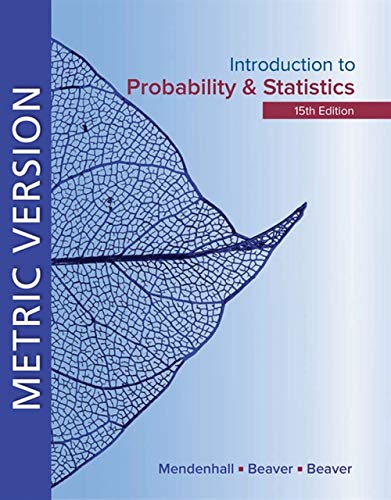(Two-Sample t-Test Assuming Unequal Variances) 1. Refer to Example 10.17. If the ratio of the two sample...
Question:
(Two-Sample t-Test Assuming Unequal Variances)
1. Refer to Example 10.17. If the ratio of the two sample variances had been so large that you could not assume equal variances (we use “greater than 3” as a rule of thumb), you should select Data ➤ Data Analysis ➤ t-Test: Two-Sample Assuming Unequal Variances.
2. Follow the directions for the Equal Variances t-test, and you will generate similar output. If we use this test on the data from Example 10.17, the following output results (Figure 10.21).

3. You will see slight differences in the observed value of the test statistic, the degrees of freedom and the p-values for the test, but the conclusions did not change.
4. NOTE: When calculating the degrees of freedom for Satterthwaite’s Approximation, the Data Analysis Tool in Excel rounds to the nearest integer. An alternative Excel function for calculating the p-value for this test (FORMULAS ➤ Insert Function ➤ Statistical ➤ T.TEST) uses the exact value of df given by Satterthwaite’s formula. Because of these different approaches to determining the degrees of freedom, the results of T.TEST and the t-Test tool may differ slightly in the Unequal Variances case, and may also differ slightly from the MINITAB output
Step by Step Answer:

Introduction To Probability And Statistics
ISBN: 9780357114469
15th Edition
Authors: William Mendenhall Iii , Robert Beaver , Barbara Beaver






